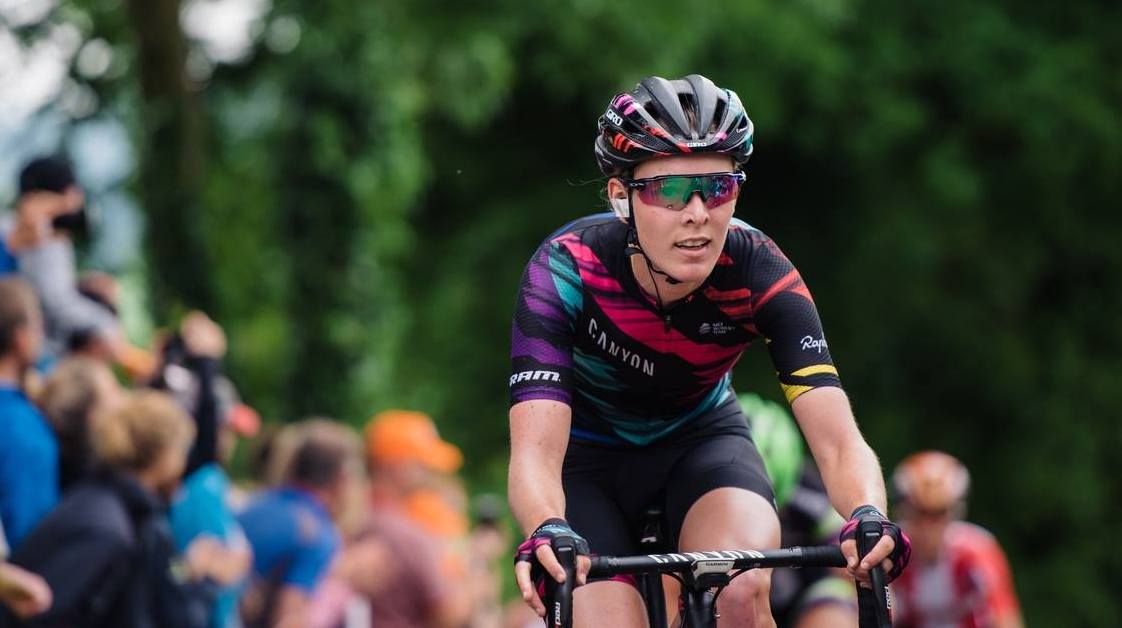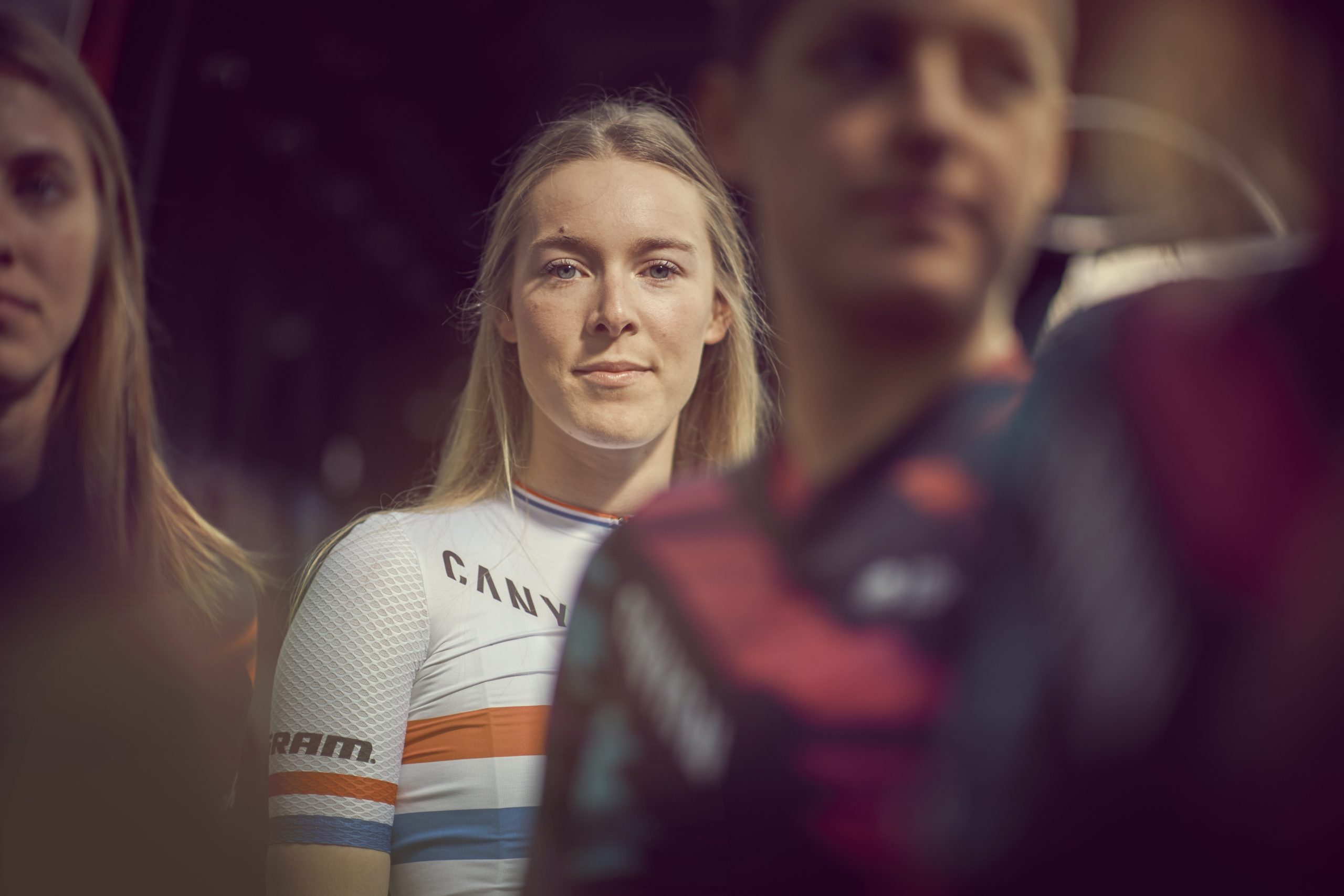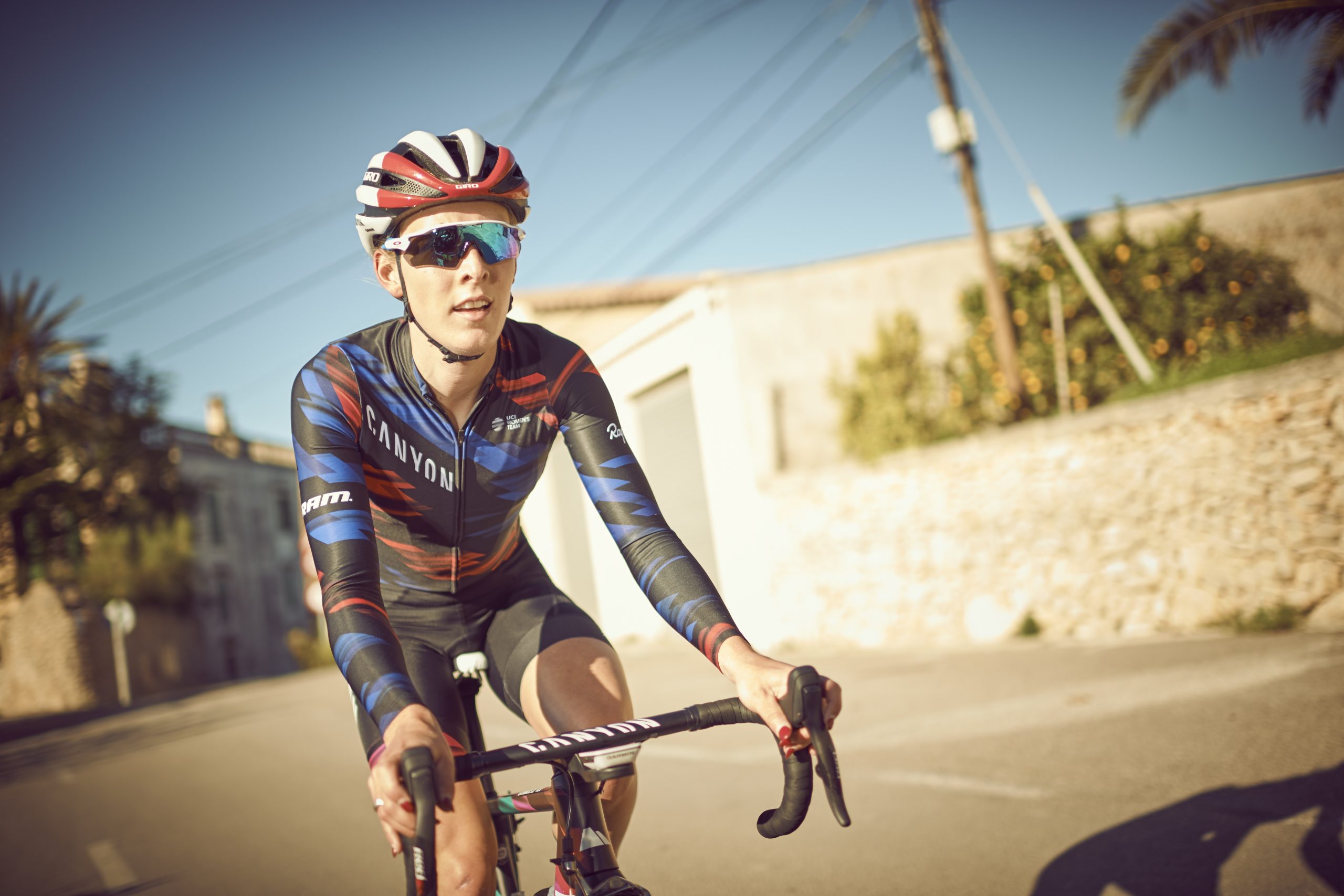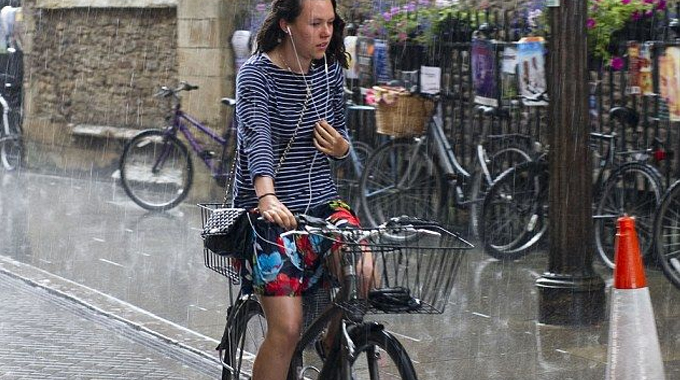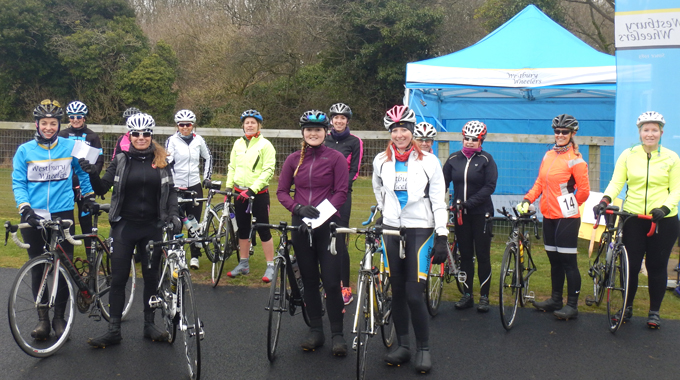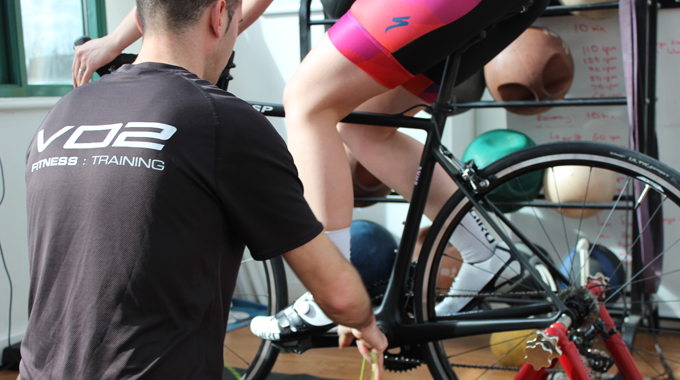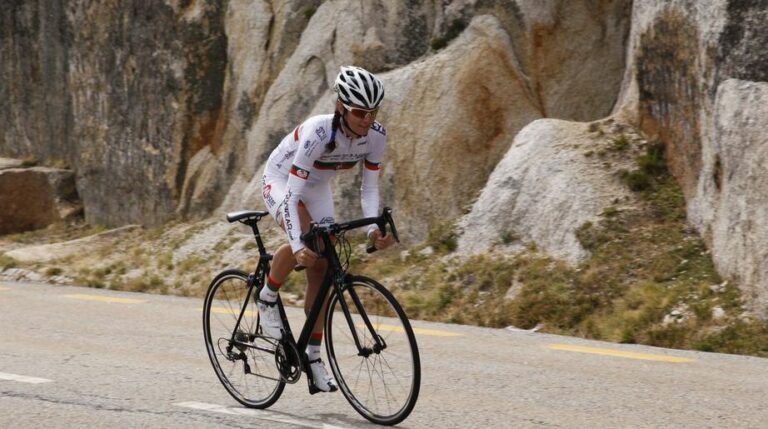A new season begins for Hannah Barnes on the first day of March. That’s almost two months earlier than her 2016 season opener, which was delayed due to a five month injury lay-off. When I last met with the Canyon//SRAM rider – just before the Christmas of 2015 – she was still hobbling around on crutches with her foot in a boot.
Barnes was off the bike through the winter and spring of 2015/2016, thanks to a broken ankle sustained in August. Once she was given the all clear to get back on the bike, the sole focus was on getting race fit – and that she did, becoming the National Road Race Champion in June despite the struggles of her stunted preparation. We can only wonder at what she might accomplish this year – but the future certainly looks promising .

Barnes enters the melee of the spring classics with a solid base of winter training, which has had a heavy focus on strength work following a stint racing with imbalances resulting from her lay-off.
She explains: “[When I first got back on the bike] I didn’t do any strength work. I got the cast taken off, was told ‘you can start riding’, and that was it – I was just riding my bike. I did a lot of rehab and physio just to loosen the [ankle] joint up because it was so tight. And I did three sessions of an hour long each in the swimming pool each week, learning to walk again and just doing low impact work to build up the muscle in my leg, such as calf raises with the help of the water, and using a float to just kick for forty minutes. It was different – but in my mind I just had to get race fit and get on my bike.”

Over the course of her five months in a cast, Barnes had lost a shocking 6 centimeters of muscle mass around her calf. So clearly she would have been riding with some imbalances. The fact that the 23-year-old remained injury free goes a long way to demonstrating what separates pro cyclists from the rest of us. Case in point: I’ve got one lazy glute muscle, and it’s had me off the bike on multiple occasions due to the resulting wonky riding. And I’m probably riding a minuscule percentage of Barnes’ load. I’m eager to hear how she went about addressing the imbalances over winter, and I’m taking notes.
Barnes, who originally hales from Tunbridge Wells in Kent, tells me: “From November to now I’ve done a lot of gym work. That’s all it’s been about really. I had a lot of imbalances. And thankfully I’ve not had any injuries from that – but a lot of physios and swannys are a bit concerned that in two or three years’ time there could be [if I didn’t fix it]. In November, British Cycling, assessed me and gave me a full gym programme. Then I’d go back every 6 weeks and they’d look at it again.”
It’s not all about just strengthening the right leg, which is attached to the ankle that was broken in her crash in August 2015: “I’ve noticed the leg that I broke – the right quad – is a lot stronger than my left. My quad was dominating, because my hamstring and calf where so weak. Everything I’ve been doing has been single leg – for example, if I do leg presses, I do one leg at a time so that my dominant leg can’t take the load. But they [British Cycling who wrote the strength plan] were pretty adamant that anything I did on my left I had to do on my right.”
When I last met Barnes, she was on a training camp with her new Canyon//SRAM teamies, but not able to get out on the bike with them. Spending ten days on a pre-season training camp, with only leg raises to compensate for missing multiple hour rides in the mountains, must have been a hard pill to take. I comment that she seemed to cope well, and she replies: “People say that I dealt with it well. But they didn’t really see me when I was not dealing with it well. I honestly don’t know how I did get through it. I knew what my injury was, and I knew that it was healing. There can be some injuries where you have no idea what the problem is, so at least I knew what was wrong. It was just so ongoing, I didn’t know when it would be better. I guess when you’ve got support like I have, it really helps a lot: my friends and family were great. Also British Cycling were able to really look after me – all the MRI scans were all sorted for me. The only problem I had was just to get better.”

